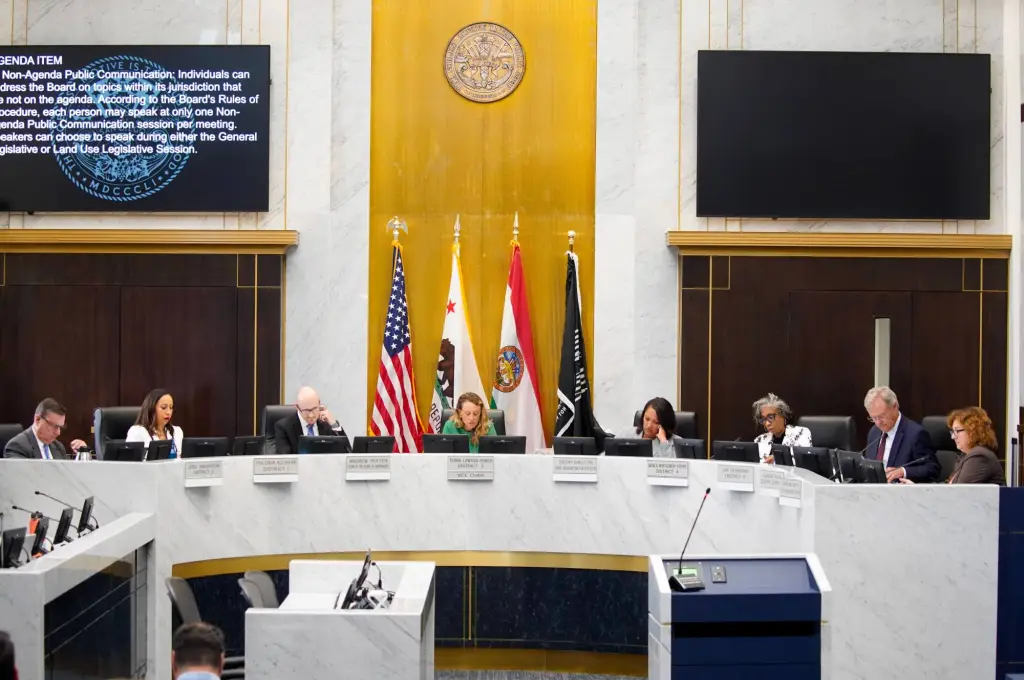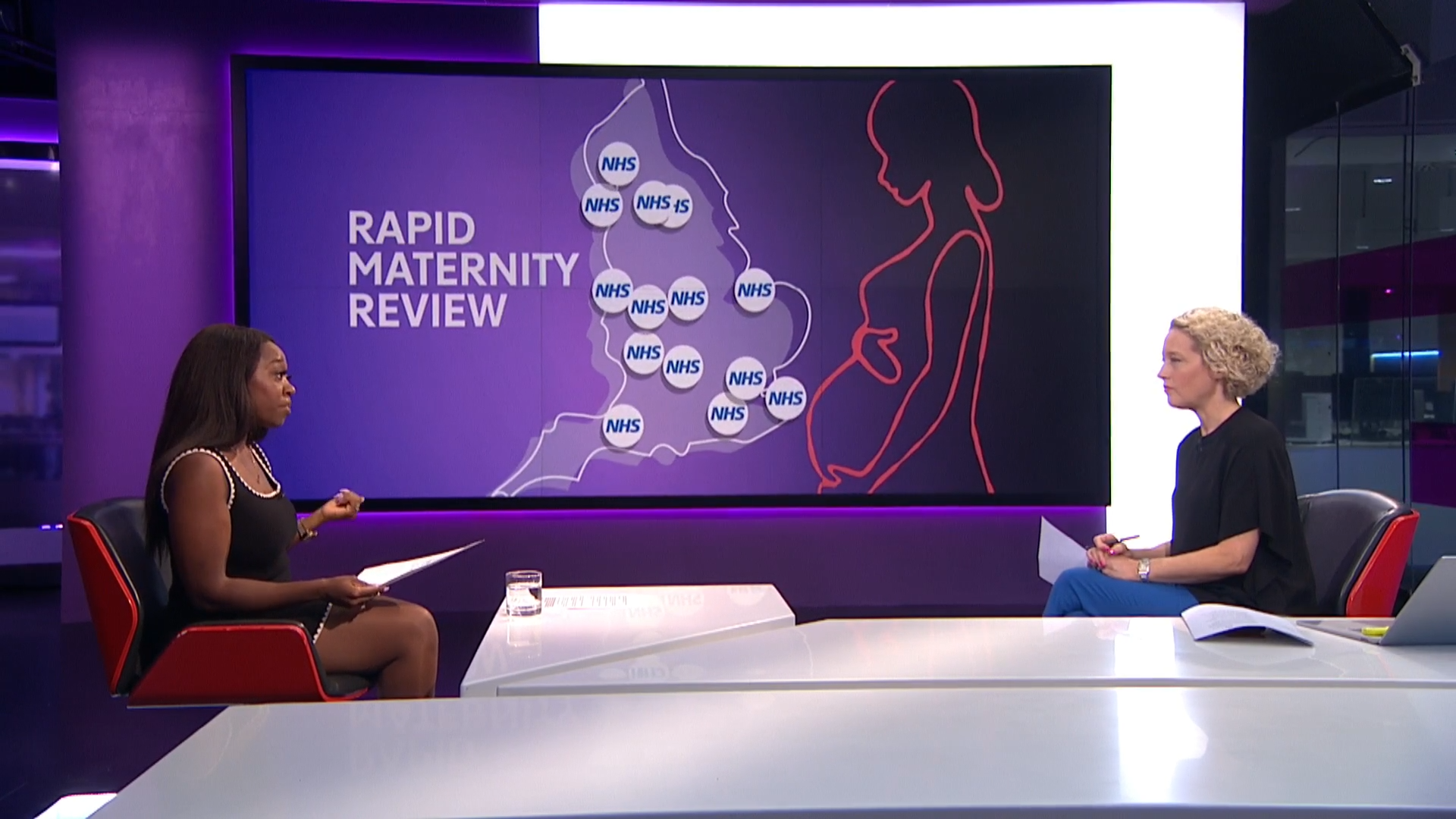
In 2019, suspecting one of their sons of vandalism, San Diego County sheriff’s deputies burst into the Najarros’ Vista home without a warrant, then punched, choked, fired a Taser gun at and threatened to shoot different members of the family before arresting them all, the family said in a lawsuit.
The family posted bail, and no criminal charges were ever filed against them. In 2021, San Diego County paid them $225,000 in public money to settle their civil lawsuit over the episode.
In 2019, a decades-long Potrero Library employee suffering from pancreatic cancer sued the county for firing her after she told library officials a co-worker was discriminating against Black children, calling them “dirty” and using gloves to touch them and things they had touched.
Taxpayers footed the bill for the county to settle her lawsuit for $195,000 in 2023.
A $10 million payout to a construction contractor here, $500,000 in settlements of sexual harassment allegations against a sheriff’s lieutenant there, and the price tag for San Diego County to resolve the legal claims against it begins to add up.
Disputes like these and dozens of others have created mounting legal bills for the county as it pays out more money in judgments and settlements to those who allege physical harm, financial damages and even death at the hands of county personnel and its facilities.
The San Diego Union-Tribune tallied every settlement and judgment the county paid out between January 2020 and May 2025 totaling $25,000 or more, the threshold that requires the Board of Supervisors to sign off on a payout.
Those payouts total almost $158 million, with the amount paid each year fluctuating — adding up to $19 million in 2020, for example, but reaching $36 million last year. These figures offer only a partial view of the sums the county shells out, because they don’t include what it pays to settle the many smaller claims that don’t require supervisors’ approval.
The bulk of the payouts come from one part of county government — the Sheriff’s Office. Lawsuits over deaths and injuries in county jails and allegations of excessive force and other misconduct involving sheriff’s personnel led to almost $95 million in payouts, or 60% of the total.
Because the county is mainly self-insured, it must pay the bulk of its legal payouts out of its general fund, at the expense of the services that San Diego County taxpayers fund.
And the risks posed by future lawsuits are rising for local governments, largely due to a state law, Assembly Bill 218, that expanded the statute of limitations for sexual abuse lawsuits against them. The county has yet to settle lawsuits brought under AB 218, but the county says it’s already impacted by a trend faced by agencies statewide.
From 2018 to 2023, the amount of money public agencies paid out in taxpayer-funded settlements and judgements tripled, according to a recent report from the California Association of Joint Powers Authorities. AB 218 claims have helped drive that, along with other state laws that make it easier to sue public entities and juries pushing for higher judgments, said Marinda Griese, the group’s board president.
“If we were a candy store, the grizzly bears are just allowed in, and they raid the store,” she said. “There’s very little we can do to stop a variety of cases.”
San Diego County has attributed its rising costs to aggressive advertising by plaintiffs’ lawyers, regulatory changes and general distrust of government and large corporations, county spokesperson Tammy Glenn said.
“The county is committed to resolve claims and do what is right for anyone who has been harmed,” Glenn said.
Still, six plaintiffs’ attorneys with experience suing the county say it often rejects reasonable early settlement offers and opts to fight back, even in cases where they see settling as inevitable.
Prolonging a case racks up the fees attorneys can collect once a settlement is reached, and plaintiffs’ attorneys who spoke with the Union-Tribune say they have seen the county needlessly fight a range of lawsuits, from ones over jail deaths to those filed by parents whose children are removed from their homes.
“My head explodes at the way they litigate these cases,” said Brody McBride, a civil rights attorney who has represented plaintiffs who have sued the county over deaths in its jails.
“If you’re suing an insurance company over a vehicle collision, it is all about money,” McBride said. “They make very shrewd early decisions. The county is the opposite. It’s like, ‘Fight every case. Never give in.’ And what happens?”
Spending on lawsuits remains a small fraction of the county’s $8.6 billion annual budget. But paying out tens of millions each year in settlements, judgments and legal costs denies that money to other county services, from libraries, parks and roads to social services and public safety.
The Union-Tribune reached out to all five members of the Board of Supervisors, who in closed session briefings with county attorneys are briefed on litigation and sign off on lawsuit settlements. Supervisor Paloma Aguirre declined to comment. None of the other four responded to requests.
Since the beginning of 2020, claims involving the San Diego County Sheriff’s Office have led to most of all the spending county supervisors have approved on legal settlements and judgments, records show. But its share has swung over that time.
In 2020, payouts involving jail deaths and allegations of officer misconduct and excessive force totaled nearly $6 million, for 30% of all payouts that year. The share of such cases peaked in 2023 at nearly $36 million, making up 82% of the total payouts that supervisors approved that year. And last year, those payouts stood at $21 million, or 60% of all payouts.
By comparison, all other payouts added up to about $14 million.
Those other payouts — in wrongful termination lawsuits, disputes with contractors, lawsuits by parents whose children were taken from them and more — still totaled almost $63 million over the time period analyzed, with one-off, multimillion-dollar settlements driving up that total.
Over nearly five and a half years, jail death and injury lawsuits accounted for $59 million of the nearly $95 million in supervisor-approved payouts involving the Sheriff’s Office.
The county’s most expensive settlement — $15 million — was paid just last year to the family of Elisa Serna, who died in 2019, 24 years old and pregnant, in a jail cell after a sheriff’s deputy and medical worker watched her collapse, then left her alone to die.
The long-running lawsuit from Serna’s family, first filed in 2020, is just one example of how the county needlessly fights and prolongs litigation, said civil rights lawyer Danielle Pena, who has sued the county over other jail deaths.
“(The county) knew what happened there, and they prolonged that litigation for years,” Pena said. “Every case that I can think of, the county has highly litigated that case. They have not tried to reasonably settle those cases early before we incur costs, and before they incur costs.”
Pena believes the county has been reluctant to make greater reforms in its jails lest it risk implying liability in other lawsuits. The county is currently defending a long-running class-action case alleging systemic deficiencies in the jails’ health care.
“Now they’re in so deep where it’s the climate there to just fight every case — even the ones where they know there was in fact misconduct,” Pena said.
Glenn said that the county’s attorneys approach cases much the way any lawyer would, with protecting their client the top priority.
“Public entities, like private parties, are entitled to a full and fair defense, and attorneys representing public entities are obligated, pursuant to the rules of professional conduct, to zealously advocate on behalf of their client while ensuring any resolution is appropriate and responsible for taxpayers,” Glenn said.
Beyond the county’s litigation over jail deaths and injuries, tens of millions of dollars more have been paid out in recent years over allegations of misconduct and excessive force committed by sheriff’s personnel. Such payouts have totaled about $36 million since 2020 but peaked at $19 million in 2023.
That year, the county agreed to a $12 million settlement with the family of Lucky Phounsy, who died in 2015 after deputies beat, stunned and hogtied him. The agreement came months after the case went to trial, yielding an $85 million jury award that was later thrown out by a judge.
The county’s payouts since the start of 2020 include $13.5 million to resolve allegations of sexual misconduct by Sheriff’s Office personnel — $9 million of it in that period concerning former deputy Richard Fischer. Fischer pleaded guilty in 2019 to seven criminal charges after 16 women accused him of on-the-job sexual misconduct, but the last civil lawsuit against the county came to a close just last year.
To Dan Gilleon, who represented many of Fischer’s victims in civil court, those cases are evidence of how much higher the true public costs of litigation against the county are.
In addition to footing the bill for big payouts to plaintiffs, taxpayers routinely cover myriad sunk costs like hiring outside counsel and expert witnesses on top of settlements, Gilleon said. In the civil litigation over Fischer, the county spent $1.1 million paying an outside attorney to defend Fischer.
“Why is it these public entities seem to be willing to just dump tons and tons of money defending cases and then going and taking them to trial, when it would never go to trial if it was a private entity?” Gilleon said. “The common thread is that the public doesn’t know.”



